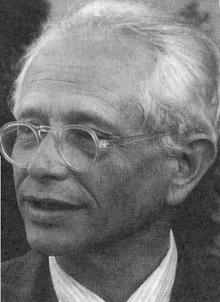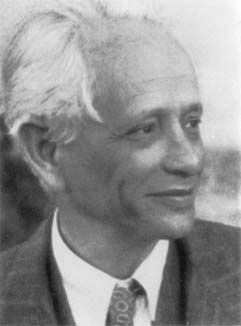

Max Dehn Seminar
on Geometry, Topology, Dynamics, and Groups
Fall 2011
| Date | Speaker | Title — click for abstract (if available) |
| September 7 |
Patrick Reynolds University of Utah |
The boundary of Outer space
This is a survey about the (usual) boundary of the
Culler-Vogtmann Outer space. After briefly recalling the
definition of Outer space, we will define a compactification
and mention some results related to the boundary of this
compactification. Topics will include: what is known about the
minset for the action of \(Out(F_n)\) on the boundary, the
structure of very small actions of \(F_n\) on
\(\mathbb{R}\)-trees, and algebraic laminations. Analogies with
the Thurston compactification of Teichmüller space will be
emphasized.
|
| September 14 |
Patrick Reynolds University of Utah |
Indecomposable trees and arational algebraic laminations
Associated to a tree \(T\) in the boundary of Outer space is a
symbolic dynamical system called the dual lamination of
\(T\), denoted \(L^2(T)\). We characterize trees \(T\) such that
\(L^2(T)\) is "minimal". Our techniques center around a two-part
inductive procedure for studying \(L^2(T)\). One part was known:
it is a slight generalization of the Rips machine; the other
part is new and is a generalization of the classical Rauzy
induction. As an application of our techniques, we give a
characterization of trees \(T\) such that \(L^2(T)\) is
arational. Joint with T. Coulbois and A. Hilion.
|
| September 21 |
Jessica Purcell Brigham Young University |
The geometry of unknotting tunnels
An unknotting tunnel is an arc in a 3-manifold M with torus
boundary, such that the complement of the tunnel in M is a
handlebody. Classically, one can "unknot" a knot or link by
pulling its diagram along an unknotting tunnel. In 1995, Adams,
and Sakuma and Weeks, asked three questions concerning the
geometry of unknotting tunnels in a hyperbolic 3-manifold: Are
they geodesic? Do they have bounded length? Are they canonical?
While the answer to the first question is still open, we will
describe fairly complete answers to all three questions in the
case where M is created by a "generic" Dehn filling. As an
application, there is an explicit family of knots in the 3-sphere
whose tunnels are arbitrarily long. This is joint with Daryl
Cooper and David Futer.
|
| September 28 |
Alden Walker California Institute of Technology |
Random rigidity in the free group
(Joint work with Danny Calegari) We prove a rigidity theorem for
the geometry of the unit ball in random subspaces of the scl norm
(equivalently, the relative 2-dimensional Gromov norm) in
\(B_1^H\) of a free group. In a free group \(F\) of rank \(k\), a
random word \(w\) of length \(n\) (conditioned to lie in
\([F,F]\)) has
\[ \text{scl}(w) = \log \frac{(2k-1)n}{6 \log(n)} + O \left(
\frac{n}{\log(n)} \right) \]
with high probability, and the unit ball in a subspace spanned by
\(d\) random words of length \(O(n)\) is \(C^0\) close to a
(suitably affinely scaled) octahedron. A conjectural
generalization to hyperbolic groups and manifolds would show that
the length of a random geodesic in a hyperbolic manifold can be
recovered from the bounded cohomology of the fundamental group.
|
| October 5 |
Mladen Bestvina University if Utah |
Geometry of Integral Binary Hermitian Forms
We generalize Conway's approach to integral binary quadratic
forms on \( \mathbb Q \) to study integral binary hermitian forms
on quadratic imaginary extensions of \(\mathbb Q\). In Conway's
case, an indefinite form that doesn't represent \(0\) determines a
line ("river") in the spine T associated with \(\text{SL}(2,
\mathbb Z)\) in the hyperbolic plane. In our generalization, such
a form determines a plane ("ocean") in Mendoza's spine associated
with the corresponding Bianchi group \(\text{SL}(2,A)\) in
hyperbolic 3-space. This is joint work with Gordan Savin.
|
| November 2 |
Jing Tao University of Utah |
T.B.A. |
| November 9 |
Sebastian
Hensel University of Bonn |
Sphere systems and the geometry of Out(F_n)
By a theorem of Laudenbach, the outer automorphism group
\(\mathrm{Out}(\mathbb{F}_n)\) of a free group is a cofinite
quotient of the mapping class group of a suitable 3-manifold
\(M_n\). This point of view allows to study the geometry of
\(\mathrm{Out}(\mathbb{F}_n)\) with methods inspired from
surface mapping class groups. In this talk, we present an
application of this strategy: we show that the natural
inclusion of the mapping class group of a surface of genus
\(g\) with one puncture into \(\mathrm{Out}(\mathbb{F}_{2g})\)
is undistorted. The results are joint work with Ursula
Hamenstädt.
|
| November 16 |
Jorg
Thuswaldner Leoben/BYU |
Rational self-affine tiles
In this talk I study self-affine tiles that are defined using
rational matrices. These tiles are subsets of the direct product
of \( \mathbb{R}^n \) with a number of \(p\)-adic completions of a
number field K. We study tiling properties of these tiles and
discuss their relation to numeration.
|
Current Seminar Archive of past talks
Max Dehn Seminar is organized by Mladen Bestvina, Ken Bromberg, Patrick Reynolds,
Jing Tao, Domingo Toledo, and Kevin Wortman.
This web page is maintained by Patrick Reynolds and Jing Tao.

